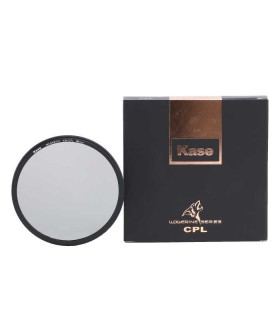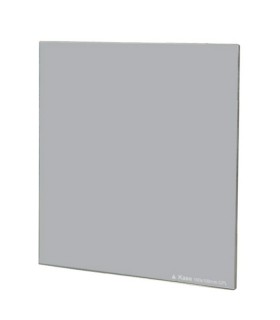POLARIZING FILTER, WHICH ONE SHOULD YOU BUY?
Light polarizers in landscape photography
I am still surprised when someone asks me what a polarizer is for and if it is necessary, it is a filter so common to me that it surprises me that it is so unknown in the photographic world.
This article is designed to make this filter a little known, sometimes essential and sometimes not recommended, a filter that every photographer, at least, should assess if they should have it and when to use it.
WHAT IS A POLARIZING FILTER?
I am not going to delve into this section as there are thousands of articles on the internet, but I am going to try to make it easy for you to understand how a polarizer works, but first an anecdote, what company invented the polarizer? Well, Polaroid ;)
There are two types of polarizers, the linear and the circular, "the circular thing is not because it is round", I am not going to go into technicalities, I just tell you that we currently use the circular ones because they are "compatible" with the photometers of our cameras, yes you mount a linear one the camera will sometimes measure the light well and other times not, also the focus will also go crazy.
Since a circular polarizer is made up of a linear one plus a phase filter (to be able to work with cameras with an exposure meter and autofocus), we are going to explain in a simple way how a linear one works.
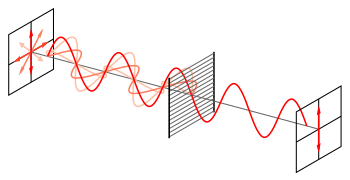
A linear polarizer is nothing more than a grid, yes, a simple grid that will only let pass a wave of light parallel to the grid, the other waves will not pass and thus we will only be left with a single polarized plane.
HOW DO I USE A POLARIZING FILTER?
You may have ever used one to try to remove a reflection and it didn't disappear no matter how many turns you gave the polarizer, why? Very simple, the secret is in the viewing angle.
A reflection is nothing more than polarized light, so we have to find that specific angle that will allow us to align the polarizer to eliminate it, if you face a shop window and try to eliminate the reflection to see inside you will not achieve much, just position yourself at 45º and you see turning the polarizer until almost all the reflection disappears.
DOES A POLARIZER SUBTRACT LIGHT (STEPS)?
Indeed, if you look at the polarizer, it only keeps part of the light that enters it, so it "covers" part of the light that we are capturing. Normally about 1.5 light stops remain, these steps have to be taken into account when we calculate the exposure time with our favorite application, don't forget it!!
WHERE SHOULD THE POLARIZER BE MOUNTED?
If you have understood how the polarizer works, you will be able to deduce that the polarizer does its job wherever it is mounted, whether it is the closest to the lens or the furthest from the lens, the light will always be polarized. This does not mean that if the filter is mounted closest to the lens, the small bounces that are caused by the ND or GND filters will also be filtered by the polarizer.
In short, do not be convinced by brands that want to sell their product at all costs, now you know how a polarizer works, think for yourself!!
BUT, WHAT CAN I USE IT FOR?
Now that we are clear about how it works and where to place it comes the next question, what the hell is a polarizer used for?
This filter, in my experience, has two great uses:
-
Give volume to the clouds: Thanks to the polarizer we managed to eliminate some reflected light from the clouds, giving them more volume so that they are not so "flat", it is a good ally to get well-defined clouds. As the clouds will be above the horizon, we have sucked those 45º out of phase necessary for the polarizer to work..
-
Elimination/Enhancement of reflections: With the help of this filter we can achieve two effects, for example in a lake, if we want to see the bottom we will put the camera looking at the water at 45º (more or less) and we will move the polarizer until we can see the background, on the other hand, maybe what we want is to have a perfect reflection of a nearby mountain, so we position the camera in the same way (we pray that it doesn't make air and move the water, hahaha), then we turn the polarizer until achieve the desired effect.

Photo: Francisco Haro
DOES THE POLARIZER SATURATE THE COLORS?
Although it is not its task, depending on the brand of the filter, some give a little saturation to the capture, it is appreciated since it eliminates work later in PS, but if you have a polarizer that leaves the image as it is, it does not mean that it is "bad" ", it really is better because the final result will be given by us in the edition.
There are brands like NiSi that play a bit with commercial words and call the polarizer that saturates the colors a little "Landscape", so you can choose between one model or another depending on what you want to achieve, you have to keep in mind that this type of polarizers remains also more light than normal one.
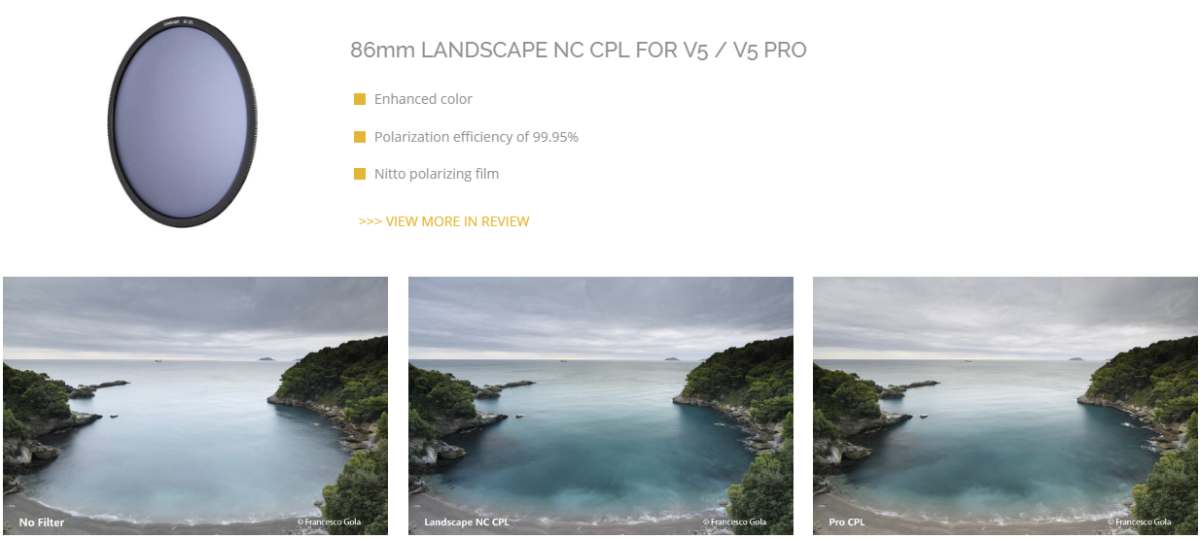
Brands like KASE have very high quality polarizers, this is important to avoid problems with vignetting or foreign elements. From our experience, KASE polarizers remind us of the extraordinary quality that the old linear polarizers offered us, a real luxury!!
COMMON PROBLEMS WITH POLARIZERS WITH ANGLE AND ULTRA ANGLE LENSES
When we work with angular or ultra-angular lenses we have to be careful how we take the photo, if we try to take a photo with a very strong sun it will create a beautiful "banding" in the photo that will leave it ruined unless we want it as a background. screen of our mobile.
The vignetting (uneven darkening) in the image will depend on the angle with which you take the photo, it will not be the same at 10mm as it is at 15mm but the vignetting will exist and we must play with it so that it looks the best possible in our composition, depending on the direction of the sun that vignetting will not occur in the corners, but in some corner and part of the image.
In panoramic photographs, the polarizer should not be used since the union between them will be perfectly visible due to the difference in light, it is a recommendation from experience, listen to me.

Photo: https://luminous-landscape.com
DOUBLE POLARIZATION or CROSS POLARIZATION

If we work in advertising or dentistry, to name two professional sectors, we need to eliminate as many reflections and bounces of light as possible, or at least, only those that interest us remain and allow us to define the object to be photographed very well.
Double polarization is nothing more than the use of two polarizers, but the two are not mounted on the camera, one polarizer is mounted on the camera and the other on the light source rotated 90º, either a flash or direct light, with This allows us to send the already polarized light to the object and capture it with the polarizer rotated to eliminate that polarized light. This gives us great control over reflections, eliminating them almost 100%.

Here we have an example, in dentistry or for close-up photos flashes attached to the lens are used, there are special polarizers for this profession that work with double polarization or cross polarization, as you can see in the lens the polarizer it is at 90º and in the side flashes at 0º.

Photo: https://www.dentistryiq.com
FORMATS OF POLARIZING FILTERS
Polarizers can be found in many formats, some more popular than others, and it is important to know them all, since depending on the lens, the point of light, or the effect we want to achieve, we will need one type of polarizer or another.
1. THREADED ROUND POLARIZER
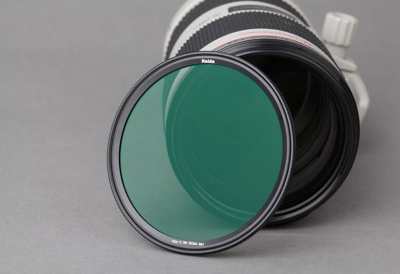
It is the filter format best known to all of us, a round polarizer that we screw into the lens and once in place we turn the external ring to polarize more or less. If we work with only two or three threaded filters and we don't use gradients, it's a good option.
Keep in mind that they must be Slim filters so as not to add precious vignetting to the image, this makes the filter a bit more expensive and still gives us vignetting, a recommended option with angular lenses is to select a larger thread size than the the lens and by means of adapters we can fix it to avoid vignetting.
2. ROUND MAGNETIC POLARIZER
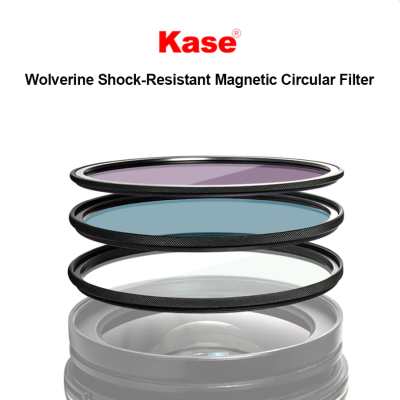
KASE magnetic filters have all the advantages of the round format with the particularity of magnetic mounting, one pass, working with this filter format is fast and super comfortable, you can also mount one filter on top of another (up to 3) to get any shot , whether they are ND, gradients, inverse, come on, milk.
In this case, the polarizer will be the last filter to mount to be able to rotate it easily, in the following video you can see how these magnetic filters work.
3. SQUARE POLARIZER
About 2 years ago, counting from the writing of this article, there were no square polarizers, but brands like KASE and NiSi brought 150x150 polarizers to the market to cover ultra-wide lenses like the Nikon 14-24, Tamron 15-30, Sigma 14- 24, etc, etc, thanks to these square polarizers, today we can work with a multitude of lenses that need a 150mm filter holder due to their wide angle of capture and cannot use round polarizers.
If you are a bit avid and you know what this photography with filters is about, you may have wondered, how do I polarize if I have a gradient mounted in front? As we have been seeing, the polarizers have to be rotated to polarize more or less, but if we have a gradient mounted and aligned with the horizon, the holder cannot be rotated if we do not want to lose it, then what do we do?

Photo: Phil Norton
The only solution is to use the square polarizer by turning it 90º, that means that we can work with the polarizing at 100%, 50% or 0%, but be careful, we are talking about having a gradient mounted and we don't want to lose the horizon, in In the case that we are working only with an ND, we can rotate the square polarizer like a round filter and polarize more or less according to our needs. In the end, the filter is exactly the same as the round one but in a square format.
To solve all this, brands like KASE have turned around the 150mm holder and have released the KASE K150, with a round polarizer, it's the same 100mm system but for ultra-wide lenses, we'll talk about them later.
So, are there only 150x150mm square polarizers? No, KASE have 100x100 polarizers that can be especially useful on some occasions, such as to solve the problem of using a 100mm filter holder with the Zuiko 7-14 lens, this lens is mounted on the Olympus OM-D cameras and it has such an extreme angle that it needs a 150mm filter holder if we don't want to have vignetting, but with 100mm filters we can work with a little vignetting and the appropriate filter holder, for this situation the 100mm polarizer is useful.
4. POLARIZERS FOR PROFESSIONAL VIDEO CAMERAS (ARRI, RED, SONY VENICE, ETC)
If we work with film cameras and Matte-box we need special polarizers for this sector, they are 4mm thick filters and measures 4x4", 4x5.65" and 6.6x6.6"
The KASE brand have polarizers with these measurements, since they are quite special filters they have to be ordered on demand.

We recommend the KASE mattebox system that uses a round polarizer, which can be freely rotated without vignetting.
5. POLARIZED SHEETS OR FILM
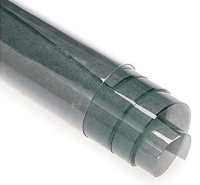
In cinema, it is often necessary to cover large lights and there are no such large glass filters, in addition to the fact that they would be prohibitive, we do not need the optical quality to polarize a light, for that we have polarized films, there are many sizes and although they are not cheap we have to know that they exist.
Until now we have always talked about polarizing a flash, but what if we have a point light or a deflector? For these cases we need this type of filter, so if you have read carefully you already know the technique and the appropriate polarizer to photograph bottles without glitters ;)
6. ROUND INSERTABLE POLARIZING FILTER
The plug-in polarizing filter is a KASE invention, combining the advantages of a square filter which can be mounted in a filter holder with the ability to be rotated like a round polarizing filter.
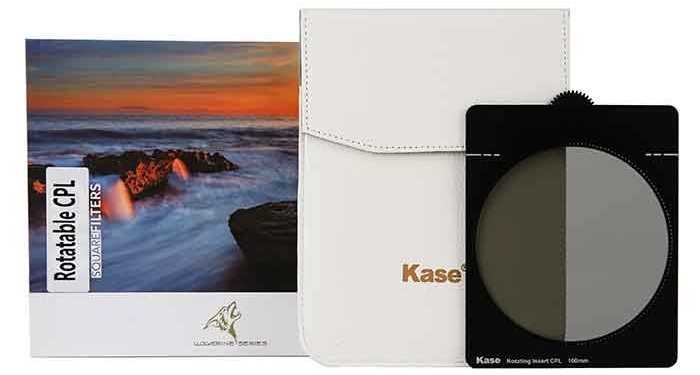
This type of filter is ideal for all those who need a polarizer in their ultra-wide lens and cannot use a filter holder with threaded adapters because they have a fixed lens hood, or this is very large (95mm), examples of lenses would be the Irix 15m or the Zuiko 7-14
FILTER HOLDER WITH POLARIZER INCLUDED
A few years ago, filter holders were incorporated into the market where the round polarizer is inserted into the filter holder itself. We have KASE, Benro, NiSi, Haida and a few weeks ago, Lee with his new FH filter holder. This polarizer has the advantage of being able to be rotated whenever we want with the square filters mounted, this is very interesting since the polarizer is closest to the lens, and we already know that it is where it will best perform its functions, also, being so close to the lens it does not need to be huge ( and very expensive) so that it does not vignetting.
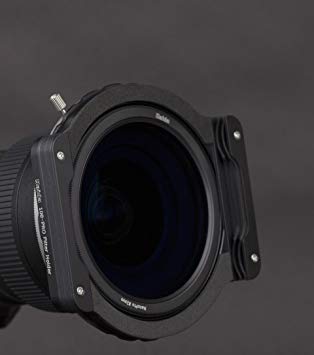
As we have hinted in a previous section, those who have ultra-wide lenses such as the Nikon 14-24, Sony 12-24 f2.8, Tamron 15-30, etc, etc, now have more modern filter holders such as the NiSi S6, the Haida M15 or the more complete KASE K150, which work just like their smaller 100mm brothers (KASE K9) with round filters integrated into the filter holder and with the possibility of rotating at any time thanks to wheels mounted on the holder.
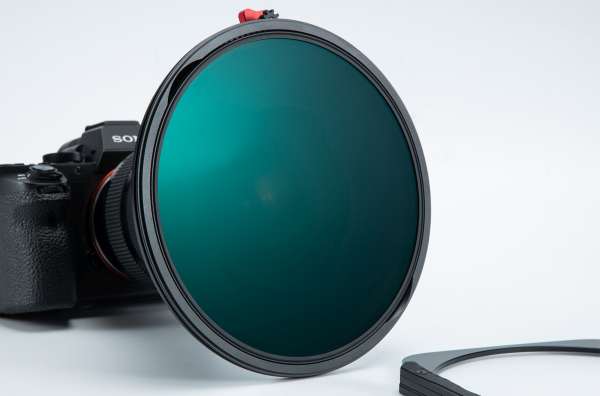
Have we seen enough? Well, we still have one more thing left, companies don't stop giving the coconut to get new features out of their filter holders, and KASE with its new K9 gives another twist, it has a built-in polarizer that can be rotated when you want by means of a small wheel that it has on its side and you can also remove it and put it on easily because it is, MAGNETIC, yes, it can be quickly put on and removed from the filter holder in a very simple way, this filter holder also has the peculiarity of being able to change the polarizer for a specific ND for the K9, there is an option to mount an ND64 or an ND1000 instead of the polarizer (not both at the same time), what do you think? Fantastic, right?
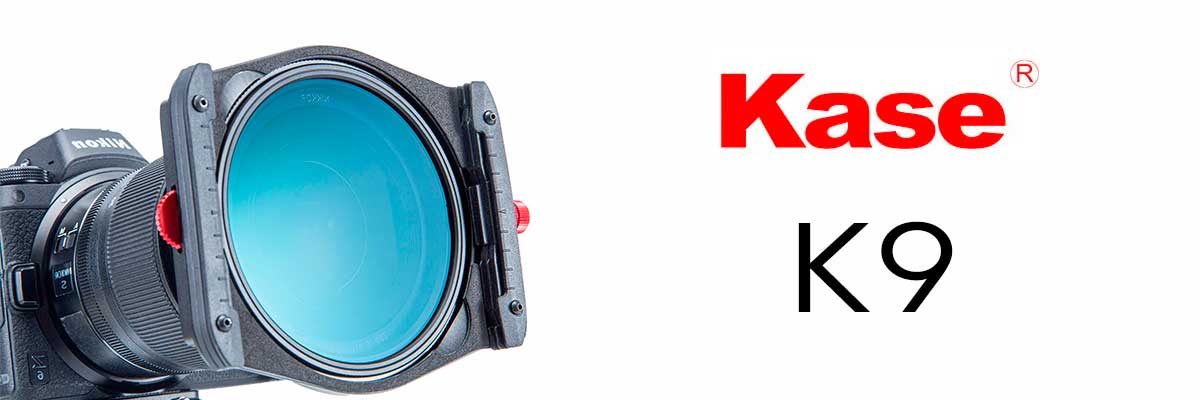
In the following video you can see everything that the K9 filter holder offers and how its fantastic polarizer works.
Do you have more doubts or questions? Do not hesitate, leave us your opinion, question or doubt in this same post.



